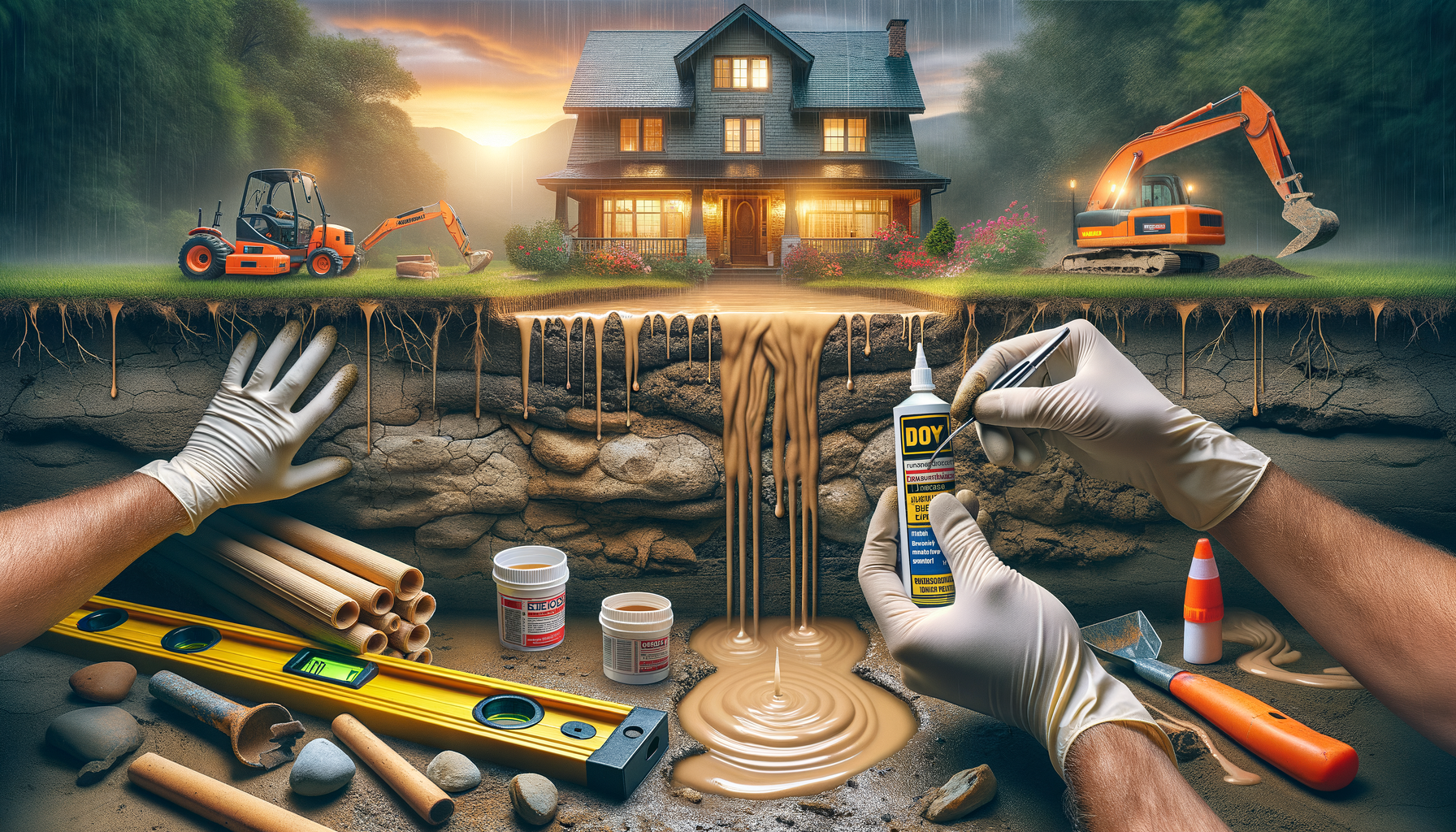Knowing how to fix a sinking foundation is important for homeowners in Canada. This guide gives you easy steps and tips to help you handle the problem. By spotting early signs, understanding the reasons, and knowing when to call a professional, you can protect your home and save money on big repairs.
Spotting Signs of a Sinking Foundation
- Cracks in walls and floors: Look for cracks, especially around doors, windows, and corners. These might mean your foundation is sinking.
- Uneven or sloping floors: Check if your floors are not level or if things roll by themselves.
- Sticking doors and windows: Notice if doors and windows are hard to open or close. This could be a sign of foundation sinking.
- Gaps around windows and doors: Look for spaces around window frames and doors where there shouldn’t be any.
- Leaning chimneys or porches: See if chimneys or porches are tilting away from the house, another sign of trouble.
Why Foundations Sink in Canada
- Soil erosion from water drainage issues: Poor drainage can wash away soil that holds up your foundation, causing it to sink.
- Poor soil compaction before building: Soil that wasn’t packed well can settle unevenly over time, leading to foundation problems.
- Weather changes making soil expand and shrink: Freezing and thawing can make soil expand and contract, affecting the foundation.
- Tree roots growing under the foundation: Roots can push and move the soil, causing the foundation to sink.
How Bad is the Sinking?
- Hiring a pro inspector: Professionals can check and find out how bad the damage is.
- DIY inspection with a level: Use a long level to see if your floors are uneven, which could mean foundation problems.
- Watch for changes with crack gauges: Put these tools over cracks to see if they move or get bigger, showing ongoing sinking.
DIY Fixes for Small Problems
- Filling small cracks with glue: Use epoxy or polyurethane to seal minor cracks and stop water from getting in.
- Fixing soil erosion with good landscaping and drainage: Make sure water flows away from your foundation to prevent soil erosion.
- Lifting small areas with mudjacking: This method injects a mix under concrete slabs to lift them and fix minor sinking.
When to Call an Expert
- Big or deep cracks in the foundation: Severe damage needs to be fixed by experts.
- Major shifts affecting your home’s stability: Big structural problems need professional help to keep your home safe.
- Ongoing water issues causing more damage: Continuous water problems need long-term fixes from professionals.
Pro Repair Methods for Sinking Foundations
- Underpinning: Strengthening your foundation by making it deeper to stop it from sinking more.
- Helical piers and steel push piers: These are put into the ground to stabilize the foundation from below.
- Slabjacking: Lifting sunken slabs by pumping a grout mix under them to level surfaces.
Preventing Foundation Sinking
- Ensuring proper water drainage: Install and check gutters and downspouts to keep water away from the foundation.
- Watching for early signs: Keep an eye out for early signs of foundation problems so you can fix them early.
- Landscaping with root barriers: Prevent tree roots from messing with your foundation using special landscaping techniques.
- Maintaining gutters and downspouts: Good water management helps prevent foundation sinking.
Costs of Fixing a Sinking Foundation
- Costs for minor repairs vs. professional work: Small DIY fixes cost less than hiring professionals, but severe issues need expert help, which can be pricier.
- Budgeting for maintenance and inspections: Regular checks can stop small issues from becoming big, expensive problems.
- Financing options for big repairs: Look into financing plans to help pay for major foundation repairs.
What Happens if You Ignore Foundation Problems
- Higher repair costs later on: Waiting to fix problems can lead to more damage and costlier repairs.
- Lower property value: Foundation problems can reduce your home’s value.
- Safety risks for residents: Ignored foundation issues can be dangerous for those living in the home.
Picking the Right Contractor
- Checking credentials and reviews: Look into contractors’ backgrounds and previous work to make sure they are trustworthy.
- Getting detailed quotes and timelines: Compare quotes to find the best price and timeline for repairs.
- Ensuring quality materials and warranties: Good materials and warranties mean the repairs will last longer and you’ll have peace of mind.
Following these steps will help Canadian homeowners understand, fix, and prevent foundation sinking issues, keeping their homes safe for years to come.


Leave a Reply